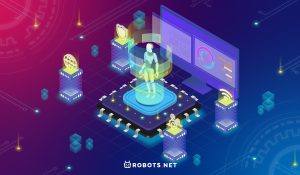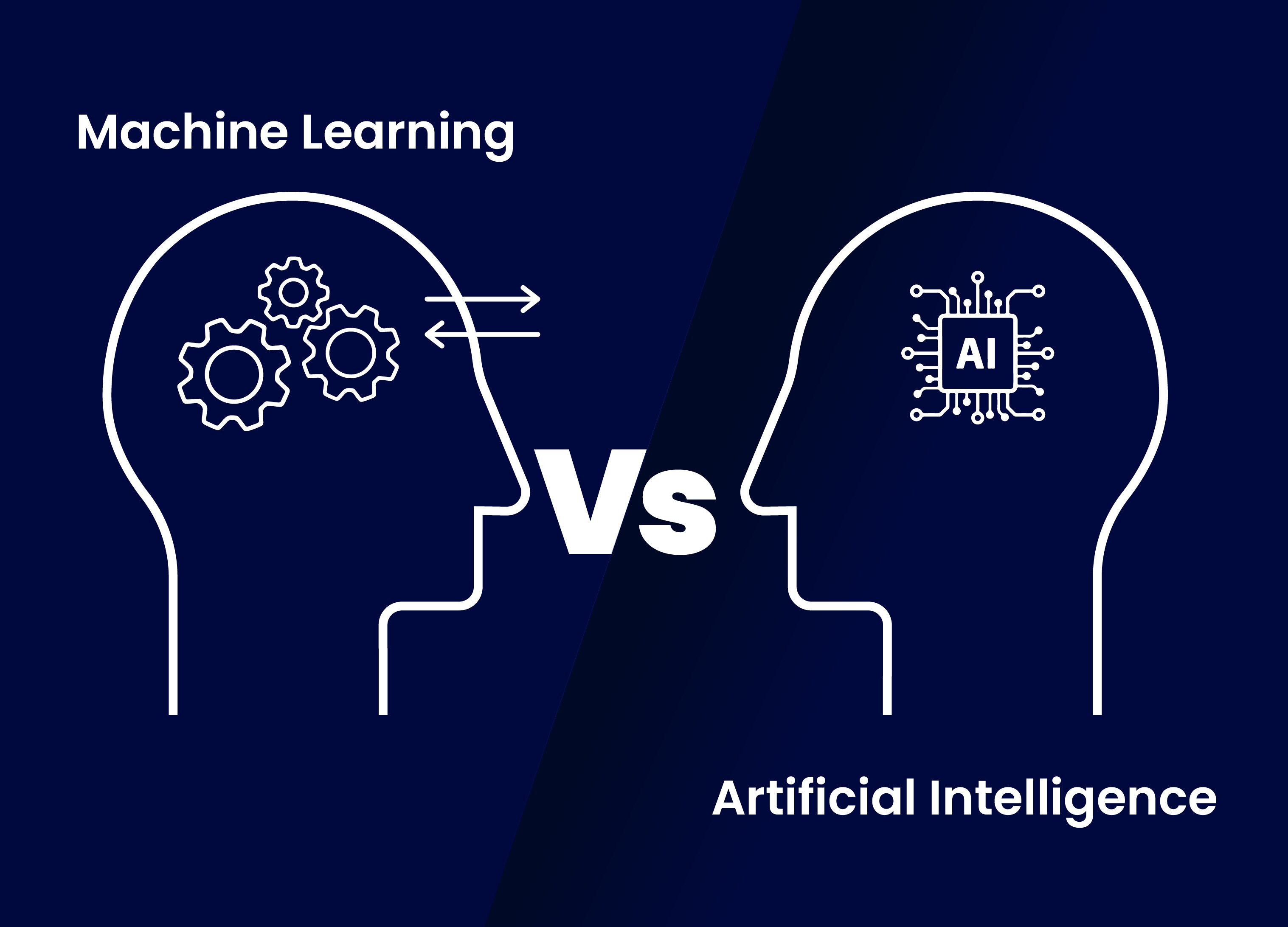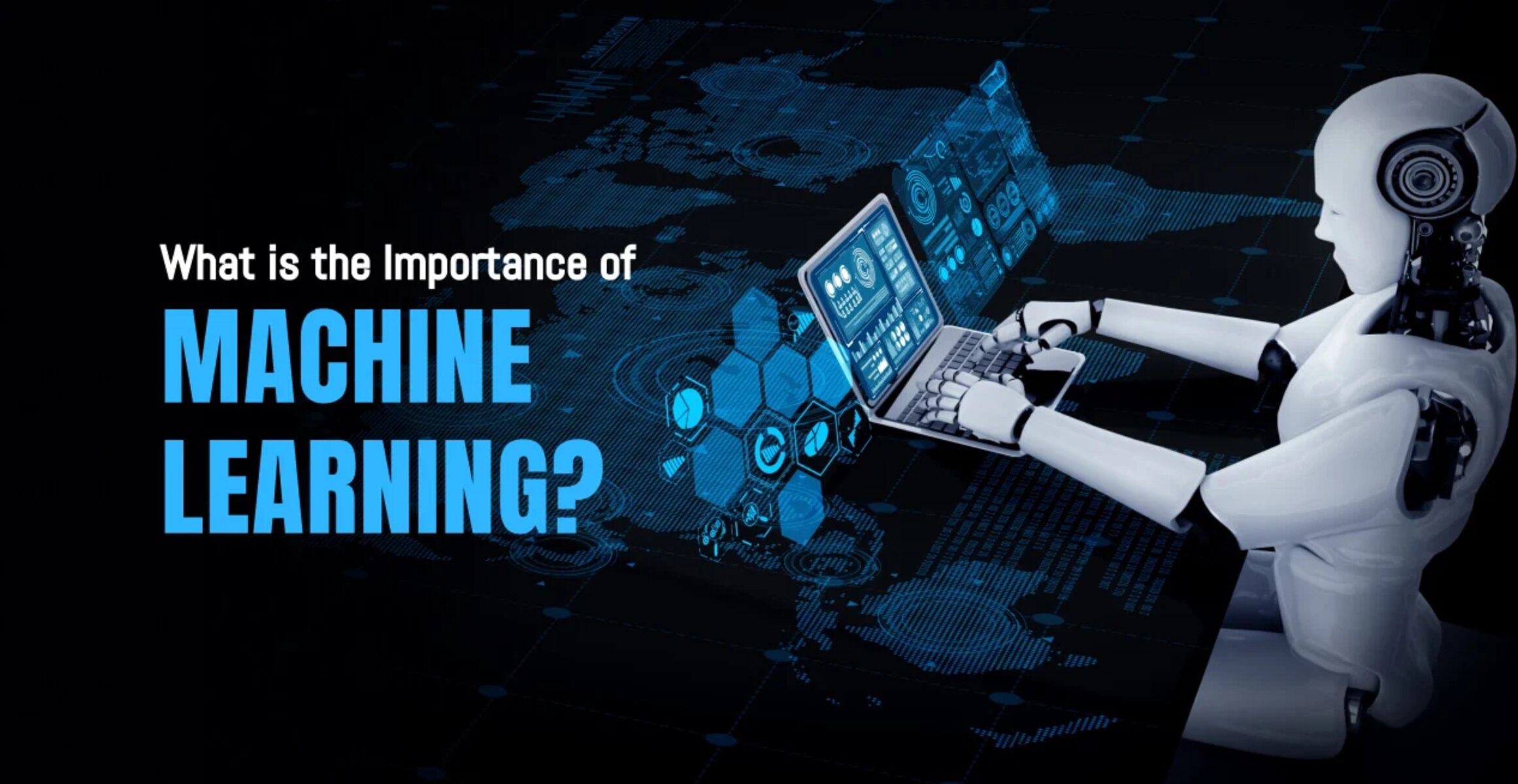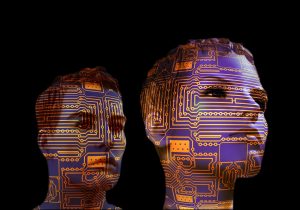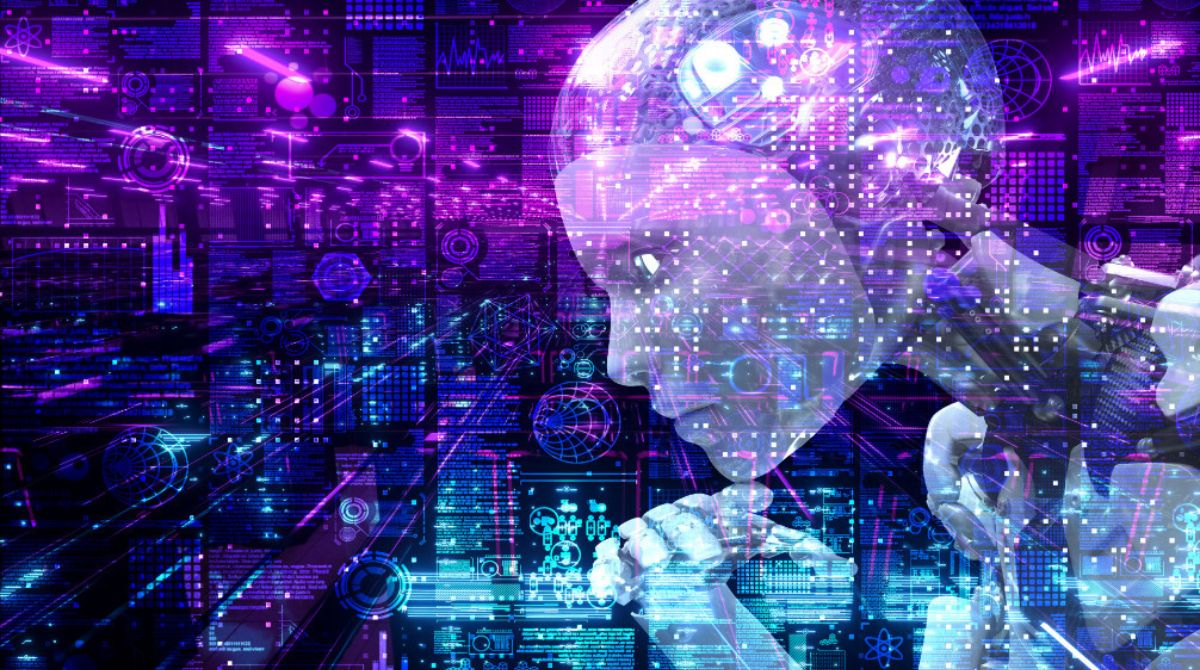Introduction
Welcome to the fascinating world of machine learning and artificial intelligence (AI). These cutting-edge technologies have gained immense popularity in recent years and have revolutionized various industries. From self-driving cars to voice assistants, machine learning and AI have become an integral part of our daily lives.
Machine learning is a subset of AI that enables computers to learn and improve from experience without being explicitly programmed. It involves developing algorithms and models that empower machines to process and analyze data, recognize patterns, and make accurate predictions or decisions.
There are different types of machine learning techniques. Supervised learning involves training a model using labeled data to make predictions or classify new, unseen data based on past examples. Unsupervised learning, on the other hand, allows machines to identify patterns and relationships in unlabeled data without any pre-existing labels. Reinforcement learning is a technique where machines learn through trial and error, receiving feedback in the form of rewards or penalties. Lastly, deep learning is a subfield of machine learning that focuses on training artificial neural networks to simulate human-like decision-making and solve complex problems.
Artificial intelligence, or AI, refers to the development of computer systems that can perform tasks that typically require human intelligence. It involves creating algorithms and models that enable machines to perceive their environment, reason, learn, and make decisions autonomously.
There are two main types of AI: narrow AI and general AI. Narrow AI, also known as weak AI, refers to systems designed to perform specific tasks with human-like accuracy. Examples include image recognition systems and virtual voice assistants. General AI, on the other hand, aims to replicate human-level intelligence across a broad range of tasks and possess the ability to understand and learn any intellectual task that a human being can.
While machine learning is a subset of AI, it plays a crucial role in its development and applications. Machine learning algorithms enable AI systems to learn and adapt from data, improve their performance over time, and make informed decisions based on patterns and insights. Machine learning is the driving force behind many of the remarkable achievements we witness in the field of AI.
The applications of machine learning and AI are vast and diverse. In healthcare, these technologies are being used for early disease detection, personalized treatment plans, and drug discovery. In finance, machine learning models help detect fraud, automate trading, and provide personalized financial advice. Other areas where machine learning and AI are making a significant impact include autonomous vehicles, predictive maintenance, natural language processing, recommendation systems, and many more.
In this article, we will delve deeper into the concepts of machine learning and AI, exploring their different types, the relationship between them, and their wide-ranging applications. So, let’s embark on this exciting journey and discover the incredible world of machine learning and AI.
What is Machine Learning?
Machine learning is a subset of artificial intelligence (AI) that focuses on enabling computers to learn and perform tasks without being explicitly programmed. Instead of following static instructions, machine learning algorithms are designed to analyze and learn from data, recognize patterns, and make accurate predictions or decisions.
The essence of machine learning lies in its ability to improve its performance over time by learning from past experiences. It involves training models on large amounts of data to identify underlying patterns and relationships. These models then make predictions or classify new, unseen data based on the knowledge they have acquired.
There are different types of machine learning techniques, each with its own approach and purpose. One of the most common techniques is supervised learning. In supervised learning, a machine learning model is trained using labeled data. This means that the input data is accompanied by the correct output or target value. The model learns from these examples and builds a function that can predict the output for new, unseen data.
Another technique is unsupervised learning. Unlike supervised learning, unsupervised learning works with unlabeled data. The goal of unsupervised learning is to identify patterns, similarities, and differences in the data without the need for pre-existing labels. It is often used for tasks such as clustering and dimensionality reduction.
Reinforcement learning is another important technique in machine learning. In reinforcement learning, an agent learns by interacting with an environment and receiving feedback in the form of rewards or penalties based on its actions. The agent aims to maximize the rewards and improve its performance through trial and error. This technique has been successfully utilized in various applications, including game playing and robotics.
Deep learning is a subfield of machine learning that focuses on training artificial neural networks, inspired by the structure and function of the human brain. Deep learning models, also known as deep neural networks, consist of multiple layers of interconnected nodes called neurons. These models are capable of processing large amounts of data and extracting high-level features. Deep learning has achieved remarkable success in image and speech recognition, natural language processing, and many other domains.
Machine learning has become increasingly prevalent in various industries due to its wide range of applications. From healthcare to finance, retail to transportation, machine learning is being used to drive innovation and improve decision-making processes. It is used for medical diagnoses, fraud detection, customer segmentation, personalized recommendations, predictive maintenance, and much more.
In summary, machine learning is a field of study that enables computers to learn from data and make predictions or decisions without being explicitly programmed. It encompasses various techniques, such as supervised learning, unsupervised learning, reinforcement learning, and deep learning. Machine learning has found its way into numerous domains and is driving the advancement of artificial intelligence.
Supervised Learning
Supervised learning is one of the fundamental techniques in machine learning. It involves training a model using labeled data, where each data point is associated with a known output or target value. The objective of supervised learning is to build a function that can accurately predict the output for new, unseen data based on the patterns and relationships learned from the training data.
In supervised learning, the labeled data acts as a teacher, guiding the model to learn the underlying patterns and make accurate predictions. The training process involves feeding the model with input data and their corresponding labels, allowing it to analyze the relationships between the features and the target variable.
There are two main types of tasks in supervised learning: regression and classification. In regression tasks, the goal is to predict a continuous numerical value. For example, predicting housing prices based on features such as location, size, and number of rooms. The model learns the relationship between the input features and the target variable and provides a numerical output that represents the predicted value.
On the other hand, in classification tasks, the goal is to assign input data to a predefined set of categories or classes. For instance, classifying emails as spam or non-spam based on their content and metadata. The model learns from labeled examples and creates decision boundaries to classify new, unseen data into the appropriate class.
Supervised learning algorithms can be broadly categorized into two types: linear algorithms and non-linear algorithms. Linear algorithms, such as linear regression and logistic regression, assume a linear relationship between the input features and the target variable. They learn a linear function that best fits the data and makes predictions based on this linear model.
Non-linear algorithms, such as decision trees, random forests, and support vector machines (SVM), can capture more complex patterns and relationships. These algorithms create decision boundaries that separate different classes based on various criteria. They are particularly effective when dealing with non-linear data and can handle a wide range of problems.
Supervised learning algorithms require a suitable evaluation metric to assess their performance. Common evaluation metrics for regression tasks include mean squared error (MSE), root mean squared error (RMSE), and R-squared. For classification tasks, metrics like accuracy, precision, recall, and F1 score are commonly used. These metrics provide insights into how well the model is generalizing to unseen data and whether the predictions align with the true values.
One challenge in supervised learning is overfitting, where the model captures noise and irrelevant patterns in the training data, leading to poor generalization. To mitigate overfitting, techniques like regularization, cross-validation, and data augmentation are employed. These techniques help the model generalize better to unseen data and improve its performance.
Supervised learning has numerous applications in various domains. It is used for sentiment analysis in natural language processing, stock market predictions in finance, medical diagnosis in healthcare, and image recognition in computer vision. It is a versatile and powerful technique that plays a critical role in solving real-world problems by making accurate predictions based on labeled data.
Unsupervised Learning
Unsupervised learning is a type of machine learning where the model learns from unlabeled data without any predefined output or target values. Unlike supervised learning that relies on labeled data, unsupervised learning aims to discover patterns, relationships, and structures within the data on its own.
In unsupervised learning, the algorithms analyze the input data and identify inherent patterns and similarities. By clustering data points or reducing the dimensionality of the data, unsupervised learning algorithms gain insights into the underlying structure of the data.
Clustering is a popular technique in unsupervised learning, where the algorithms group similar data points together based on certain characteristics or features. The goal is to find clusters with high intra-cluster similarity and low inter-cluster similarity. Clustering algorithms such as k-means, hierarchical clustering, and DBSCAN are commonly used in a variety of domains.
Dimensionality reduction is another key aspect of unsupervised learning. It involves reducing the number of input variables while preserving the important information. This is achieved by transforming the data into a lower-dimensional space. Principal Component Analysis (PCA) and t-SNE (t-Distributed Stochastic Neighbor Embedding) are widely used dimensionality reduction techniques that help visualize high-dimensional data and extract meaningful representations.
Unsupervised learning has several applications across different domains. In customer segmentation, unsupervised learning techniques can group customers based on their purchasing behavior, preferences, or demographics, aiding in targeted marketing campaigns. In anomaly detection, unsupervised learning models can identify rare or abnormal patterns in data, helping detect fraud, network intrusions, or system faults.
Unsupervised learning is also useful in recommender systems, where it analyzes user behavior and preferences to recommend relevant items or content. It can be applied to text mining tasks, such as topic modeling, where the model discovers latent topics present in a collection of documents. Another application is in image and video analysis, where unsupervised learning can uncover underlying patterns and clusters within image datasets.
One of the challenges in unsupervised learning is evaluating the performance of the models, as there are no predefined target values to compare against. Different evaluation metrics are used depending on the specific task and the goals of the analysis. These metrics assess the quality of clustering or dimensionality reduction, such as silhouette score, Davies-Bouldin index, or reconstruction error.
Unsupervised learning is a powerful tool for discovering hidden patterns and structures in data. It allows for exploratory analysis and can provide valuable insights into the data that may not be apparent through manual inspection. By leveraging unsupervised learning techniques, researchers and analysts can gain a deeper understanding of the data and uncover valuable knowledge.
Reinforcement Learning
Reinforcement learning is a type of machine learning that involves an agent learning through interaction with an environment. The agent receives feedback in the form of rewards or penalties based on its actions, and its goal is to learn the optimal behavior that maximizes the cumulative reward over time.
In reinforcement learning, the agent explores the environment, takes actions based on its current state, and observes the rewards it receives. The objective is to find a policy, a set of actions, that maximizes the expected cumulative reward. The agent learns through trial and error, adjusting its actions based on the feedback it receives.
The key components of reinforcement learning are the agent, the environment, and the reward signals. The agent interacts with the environment by taking actions, and the environment responds by transitioning to a new state and providing a reward. The agent’s goal is to learn an optimal policy that maps states to actions, maximizing the long-term reward.
The agent learns using different algorithms, such as Q-learning and Policy Gradient methods. Q-learning is a value-based approach, where the agent learns a value function known as the Q-function. This function estimates the expected cumulative reward for taking a particular action in a given state. The Q-function is updated iteratively based on the rewards received and enables the agent to make informed decisions.
Policy Gradient methods, on the other hand, directly optimize the policy, the mapping between states and actions. Instead of estimating the value function, these methods optimize the policy parameters to maximize the expected cumulative reward. Policy Gradient algorithms use techniques like policy gradient ascent, stochastic gradient descent, and Monte Carlo methods to update the policy over time.
Reinforcement learning has been successfully applied in various domains, including game playing, robotics, and autonomous systems. OpenAI’s AlphaGo and AlphaGo Zero are famous examples where reinforcement learning was employed to achieve superhuman performance in the game of Go. Reinforcement learning has also been employed in training robots to perform complex tasks, such as locomotion, manipulation, and navigation.
One of the challenges in reinforcement learning is the exploration-exploitation trade-off. The agent needs to balance between exploring new actions to discover optimal strategies and exploiting known actions that have promising rewards. Various exploration strategies, such as ε-greedy policy, upper confidence bounds, and Thompson sampling, are used to manage this trade-off and guide the agent’s exploration.
Reinforcement learning algorithms typically require a significant amount of time and resources for training as they learn through trial and error. The agent needs to interact with the environment repeatedly to improve its policy and achieve desirable outcomes. However, with advancements in computational power and algorithm efficiency, reinforcement learning has become increasingly practical and is gaining attention in various research and application domains.
Reinforcement learning provides a powerful framework for training intelligent agents to make optimal decisions in complex, dynamic environments. By learning from feedback and taking actions that maximize rewards, these agents can achieve remarkable performance and adapt to different situations. The combination of exploration, reward-based learning, and intelligent decision-making makes reinforcement learning a valuable area of study within the field of machine learning.
Deep Learning
Deep learning is a subfield of machine learning that focuses on training artificial neural networks to simulate human-like decision-making. It is inspired by the structure and function of the human brain, specifically the interconnected network of neurons.
In deep learning, artificial neural networks, also known as deep neural networks (DNNs), consist of multiple layers of interconnected nodes called neurons. Each neuron takes input from the previous layer, applies a mathematical transformation, and passes the output to the next layer. These layers allow the network to learn complex representations of the data through a hierarchical approach.
Deep learning has gained significant attention and popularity due to its ability to handle large amounts of data and identify intricate patterns and relationships. It has been instrumental in solving complex problems across various domains, including computer vision, natural language processing, speech recognition, and more.
One of the key advantages of deep learning is its ability to automatically learn hierarchical features. Lower layers of the network learn low-level features like edges and textures, while higher layers learn more abstract and complex concepts. By combining these learned features, deep neural networks can make accurate predictions or classifications.
Convolutional Neural Networks (CNNs) are commonly used in deep learning for computer vision tasks. CNNs are designed to process grid-like data, such as images, by applying convolutional filters that extract relevant features. The hierarchical structure of CNNs enables them to learn complex visual patterns and identify objects or features in images.
Recurrent Neural Networks (RNNs) are widely used for sequential data, such as time series or natural language processing. RNNs process sequences of inputs by maintaining internal memory that captures the context and dependencies between the elements of the sequence. Long Short-Term Memory (LSTM) networks and Gated Recurrent Units (GRUs) are popular variations of RNNs that address the issue of vanishing gradients and capture long-term dependencies.
Deep learning models require large amounts of labeled data for training. However, the availability of labeled data is not always abundant. To address this issue, techniques such as transfer learning and pretraining on large, labeled datasets have been developed. Transfer learning allows the model to leverage the knowledge learned from a different but related task and apply it to a new task with limited labeled data.
Deep learning models are trained using optimization algorithms like stochastic gradient descent (SGD) and its variants. These algorithms update the model’s weights and biases based on the computed gradients, aiming to minimize the difference between the predicted output and the actual output.
Deep learning has achieved remarkable success in various fields. It has been central to advancements in image recognition, enabling applications such as facial recognition, object detection, and autonomous driving. In natural language processing, deep learning models have been applied to machine translation, sentiment analysis, and speech recognition systems like virtual voice assistants.
While deep learning has achieved groundbreaking results, it also poses challenges. Training deep neural networks requires considerable computational resources and time. Overfitting, where the model performs well on training data but fails to generalize to new data, is another challenge that researchers address through techniques like regularization and dropout.
Deep learning continues to advance rapidly, with ongoing research aimed at improving network architectures, training algorithms, and addressing limitations. It holds immense potential for solving complex problems and will undoubtedly shape the future of machine learning and AI.
What is Artificial Intelligence?
Artificial intelligence (AI) refers to the development of computer systems that can perform tasks that typically require human intelligence. AI aims to create algorithms and models that enable machines to perceive their environment, reason, learn, and make decisions autonomously.
The field of AI is focused on creating intelligent machines that can mimic or simulate human-like intelligence across various domains. These machines are designed to analyze and interpret data, recognize patterns, understand natural language, solve complex problems, and adapt to new situations.
AI encompasses a wide range of techniques, approaches, and applications. These include machine learning, natural language processing, computer vision, robotics, expert systems, and more. It is constantly evolving and pushing the boundaries of what machines can achieve.
There are two main types of AI: narrow AI and general AI. Narrow AI, also known as weak AI, refers to systems designed to perform specific tasks with human-like accuracy. These systems excel in a particular domain, such as image recognition, voice assistants, or natural language processing. They focus on providing solutions to specific problems and lack the ability to understand or learn tasks outside their predefined scope.
In contrast, general AI, also known as strong AI or artificial general intelligence (AGI), aims to replicate human-level intelligence across a broad range of tasks. General AI systems possess the ability to understand, learn, and perform any intellectual task that a human being can. They can adapt to new situations, reason, and transfer knowledge from one domain to another.
General AI is a long-term goal of the AI community, and its development poses numerous challenges. These challenges include human-level comprehension, common sense reasoning, and ethical considerations surrounding the development and use of highly autonomous AI systems.
Machine learning, a subset of AI, plays a crucial role in the development and advancement of artificial intelligence. Machine learning algorithms enable AI systems to learn from data, improve their performance over time, and make informed decisions based on patterns and insights. The ability of machines to learn and adapt to new information is a cornerstone of AI development.
Artificial intelligence has found applications in various domains and industries. In healthcare, AI is used for diagnosis and treatment planning. In finance, it aids in fraud detection and algorithmic trading. AI is revolutionizing transportation with the development of autonomous vehicles and enhancing customer experience through personalized recommendations and virtual assistants.
As AI continues to evolve, so do the ethical considerations surrounding its use. Issues such as data privacy, algorithmic bias, and the impact on employment require thoughtful examination and responsible development practices.
In summary, artificial intelligence involves the creation of intelligent machines that can perform tasks that typically require human intelligence. AI encompasses various techniques, including machine learning, natural language processing, and computer vision. While narrow AI focuses on specific tasks, general AI aims to replicate human-level intelligence across multiple domains. AI has wide-ranging applications and holds great potential, accompanied by the need for responsible development and consideration of ethical implications.
Narrow AI vs General AI
Artificial intelligence (AI) can be broadly classified into two categories: narrow AI and general AI. These categories represent different levels of intelligence and capabilities exhibited by AI systems.
Narrow AI, also known as weak AI, refers to AI systems designed to perform specific tasks with human-like accuracy. These systems are developed to excel in a particular domain, such as image recognition, natural language processing, or voice assistants. They are built to solve well-defined problems and are limited to the scope for which they were designed.
Narrow AI systems are trained on vast amounts of labeled data using machine learning techniques. They identify patterns, learn from examples, and make predictions or decisions based on the learned knowledge. These systems are highly focused and are designed to optimize performance within a specific task or domain.
Examples of narrow AI applications include voice assistants like Amazon’s Alexa, which can understand and respond to voice commands, or image recognition algorithms used by social media platforms to identify objects or people in uploaded photos. These systems perform their tasks proficiently, but their abilities are confined to the specific tasks they were programmed for.
General AI, on the other hand, aims to replicate human-level intelligence across a broad range of tasks. Also known as strong AI or artificial general intelligence (AGI), general AI systems possess the ability to understand, learn, and perform any intellectual task that a human being can. They can reason, adapt to new situations, and transfer knowledge between domains.
Developing general AI is a long-term goal of the AI community and presents significant challenges. General AI requires machines to possess not only specialized intelligence but also a comprehensive understanding of the world. This includes common sense reasoning, abstract thinking, creativity, and emotional intelligence.
While narrow AI systems are highly effective in their specific domains, they lack the broader understanding and flexibility exhibited by human intelligence. General AI aims to achieve human-level or even surpass human-level intelligence across diverse domains. The development of general AI is an ongoing area of research and remains a subject of intense study and exploration.
It is important to note that the transition from narrow AI to general AI is a complex endeavor. It involves addressing challenges such as data scarcity, ethical considerations, safety, and the potential for unintended consequences. The development of general AI requires careful consideration and an understanding of the impact it may have on society.
While narrow AI continues to advance and find applications in various domains, general AI remains a long-term vision. The pursuit of general AI is driven by the aspiration to create machines that possess human-like intelligence and can autonomously adapt and learn across a broad range of tasks and domains.
The Role of Machine Learning in AI
Machine learning plays a crucial role in the development and advancement of artificial intelligence (AI). Machine learning is a subset of AI that focuses on the development of algorithms and models that enable machines to learn and improve from experience without being explicitly programmed.
One of the primary reasons machine learning is essential in AI is its ability to process and analyze vast amounts of data. Machine learning algorithms can identify patterns, extract meaningful insights, and make predictions or decisions based on data. This capability is central to the development of intelligent AI systems.
Machine learning enables AI systems to learn and adapt from data, improving their performance over time. By training machine learning models on large datasets, AI systems can recognize complex patterns and relationships that may not be evident to human programmers. This allows the AI systems to make more accurate predictions or decisions based on the learned knowledge.
Supervised learning is a type of machine learning that plays a significant role in AI. In supervised learning, a machine learning model is trained using labeled data, where each data point is associated with a known output or target value. This labeled data acts as a teacher, guiding the model to learn the underlying patterns and make accurate predictions.
Unsupervised learning is another important technique in machine learning that aids AI systems. Unsupervised learning allows machines to analyze unlabeled data and discover hidden patterns and structures within the data. This approach is particularly useful when working with large and complex datasets, as it helps AI systems identify meaningful relationships without relying on pre-existing labels.
Deep learning, a subfield of machine learning, has revolutionized AI in recent years. Deep learning models, also known as deep neural networks, are inspired by the structure and function of the human brain. These models consist of multiple layers of interconnected nodes called neurons, enabling them to learn complex representations of data.
Deep learning has demonstrated remarkable success in various AI domains, such as computer vision and natural language processing. Deep neural networks have significantly improved the accuracy and performance of AI systems in tasks like image recognition, object detection, and language translation.
The role of machine learning in AI extends beyond specific techniques and algorithms. Machine learning provides the foundation for AI systems to learn, adapt, and improve based on experiences. By leveraging machine learning, AI systems can process and understand complex data, make informed decisions, and deliver intelligent solutions to real-world problems.
Machine learning also allows AI systems to handle and analyze dynamic and large-scale data, making them scalable and applicable to a wide range of domains. It empowers AI systems to process vast amounts of information, learn from it, and provide valuable insights and predictions.
With the continued advancements in machine learning, AI systems are becoming more powerful and capable. Machine learning techniques and algorithms continue to evolve, enabling AI systems to tackle increasingly complex problems and possess more sophisticated levels of intelligence.
In summary, machine learning is a key component in AI, enabling systems to learn, adapt, and make intelligent decisions based on data. Supervised learning, unsupervised learning, and deep learning are essential techniques within machine learning that contribute to the development and advancement of AI. The role of machine learning in AI is central to creating intelligent systems that can process, analyze, and learn from data to solve complex problems and deliver valuable insights.
Applications of Machine Learning and AI
The applications of machine learning and artificial intelligence (AI) are vast and diverse, spanning across various industries and domains. These technologies have transformed the way we live and work, driving innovation, automation, and intelligent decision-making. Let’s explore some of the major areas where machine learning and AI are making a significant impact.
In healthcare, machine learning and AI are being utilized for a wide range of applications. From disease diagnosis to personalized treatment plans, these technologies are improving patient outcomes and optimizing healthcare delivery. Machine learning models can analyze patient data, medical records, and genetic information to provide insights for early disease detection and accurate diagnoses. AI-powered systems are also being developed to assist in drug discovery and clinical trials, accelerating the development of new treatments and medications.
In finance, machine learning has revolutionized areas such as fraud detection, algorithmic trading, and personalized financial advice. Machine learning algorithms can analyze vast amounts of transactions and spot patterns indicative of fraudulent activities, reducing financial losses. Quantitative analysts use machine learning models to develop trading strategies that automatically execute trades based on market conditions and historical trends. AI-powered chatbots and virtual assistants are also being employed to provide personalized financial advice to customers, enhancing their banking experiences.
Transportation and logistics benefit greatly from the applications of machine learning and AI. Autonomous vehicles leverage machine learning models to understand and interpret the environment, enabling them to navigate safely and make real-time decisions on the road. Machine learning algorithms optimize route planning, traffic management, and delivery schedules, improving efficiency and reducing costs in the transportation industry.
Retail and e-commerce have witnessed a transformative impact from machine learning and AI. Recommendation systems, powered by machine learning algorithms, analyze customer behavior, purchase history, and preferences to provide personalized product recommendations. This enhances the customer shopping experience and increases sales. AI-enabled chatbots and virtual shopping assistants are also being employed to offer personalized customer support and assistance, automating customer service processes.
In the field of cybersecurity, machine learning and AI play a crucial role in identifying and preventing security threats. AI-powered systems can detect anomalies, monitor network traffic, and identify malicious activities, thereby strengthening defenses against cyber-attacks. Machine learning algorithms continuously learn and adapt to new attack patterns, providing proactive security measures to safeguard sensitive information.
Machine learning and AI have also found applications in natural language processing and translation. AI-powered language processing systems can understand and generate human-like text, enabling chatbots to engage in natural conversations with users. Machine learning algorithms are used for speech recognition, machine translation, sentiment analysis, and language generation, revolutionizing communication and language-related tasks.
These are just a few examples of the widespread applications of machine learning and AI. From manufacturing to agriculture, energy to entertainment, these technologies are transforming industries and improving processes across the board. As advancements continue, we can expect machine learning and AI to redefine how we work, interact, and solve complex problems in the future.
Conclusion
Machine learning and artificial intelligence (AI) have emerged as powerful technologies that are reshaping industries and transforming our lives. These technologies enable computers to learn, reason, and make decisions autonomously, revolutionizing various domains such as healthcare, finance, transportation, and retail.
Machine learning, a subset of AI, plays a fundamental role in the development and advancement of AI systems. It allows machines to process and analyze massive amounts of data, recognize patterns, and make accurate predictions or decisions. Supervised learning, unsupervised learning, reinforcement learning, and deep learning are some of the techniques within machine learning that drive the development of intelligent AI systems.
AI encompasses both narrow AI and the long-term vision of general AI. Narrow AI systems are designed to excel in specific tasks, while general AI aims to replicate human-level intelligence across diverse domains. While general AI remains a significant research area, narrow AI has already demonstrated remarkable success and practical applications in various fields.
The applications of machine learning and AI are boundless. In healthcare, AI is improving diagnosis, personalized treatment, and drug discovery. In finance, machine learning is enhancing fraud detection, algorithmic trading, and financial advice. In transportation, autonomous vehicles and optimized logistics systems are transforming the industry. Retail and e-commerce benefit from personalized recommendations and AI-driven customer support. Cybersecurity, language processing, manufacturing, agriculture, and entertainment are also transforming through the implementation of machine learning and AI technologies.
While the advancements in machine learning and AI offer tremendous opportunities, ethical considerations, data privacy, and the potential impact on employment must also be carefully addressed. Responsible development practices and thoughtful implementation are essential for harnessing the full potential of these technologies while ensuring their benefits are widely accessible and their risks minimized.
As we continue to explore and push the boundaries of machine learning and AI, we can expect these technologies to shape our future in profound ways. With ongoing research, improvements in algorithms, and increased computational power, the possibilities for machine learning and AI are limitless. The journey of machine learning and AI has just begun, and it holds remarkable potential to revolutionize industries, drive innovation, and empower individuals and societies.










